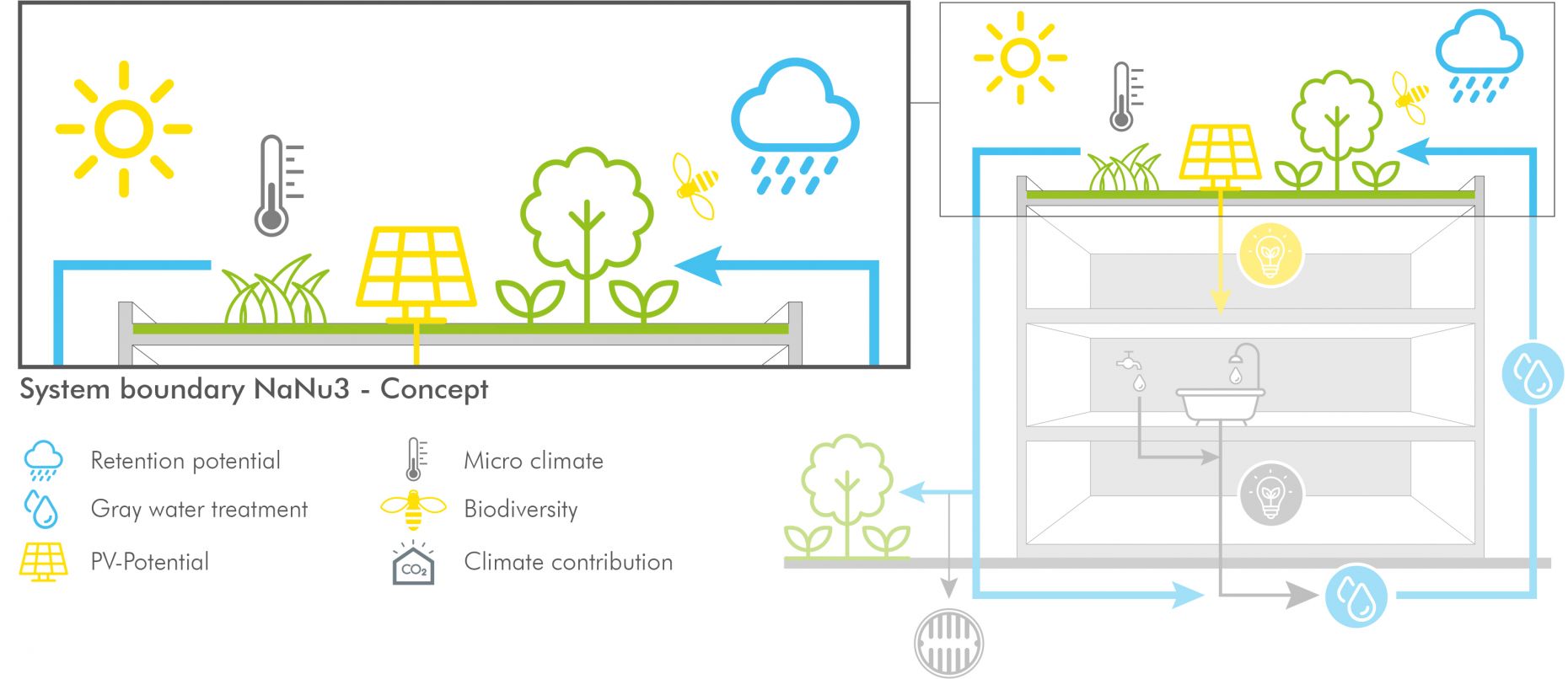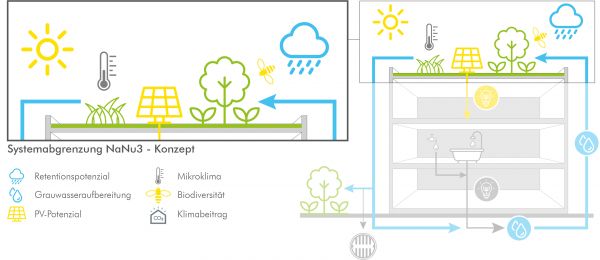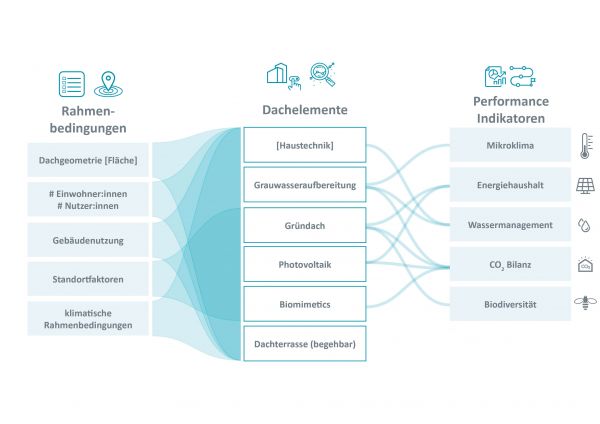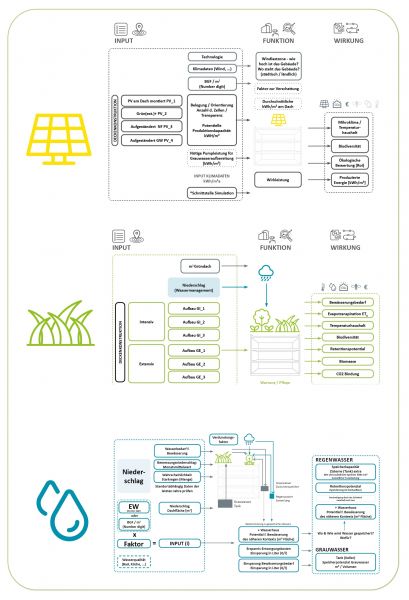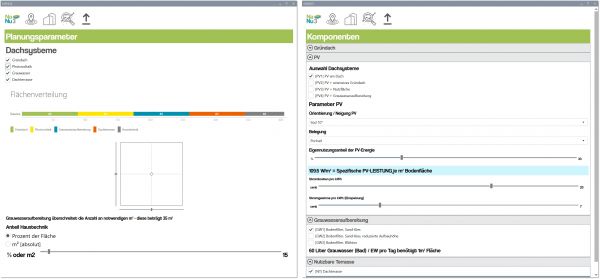NaNu3 - Parametric Planning for a Sustainable Roof (Blue, Grey and Green)
Short Description
To make a city liveable and sustainable, adaptation measures to climate change must be considered. One measure to counteract the heating up of urban areas is green roofs and facades. At the same time, increased occurrence of (very) localized heavy precipitation events is to be expected. Thus, building-based greening measures must cope with heat and associated dry periods as well as, at times, with a too large as well as a too small water supply. Green roofs, facades and interiors are particularly important building optimization and climate change adaptation measures for the smart cities of the future. Their targeted application is attracting increasing interest from owners and occupants of office, residential, commercial, industrial, and public properties, as well as planers.
The project aimed to test whether a parametric approach is suitable for practical planning work. A prototype of a parametric model was developed, which allows to test the feasibility of combined roofs quickly and cost-effectively, to dimension them and to optimize them. The results are presented transparently and in visual form for building owners and authorities. This combined sustainable use includes the already known and in detail proven modules such as energy generation through photovoltaics and greening. New additions are sustainable management of precipitation and greywater treatment through constructed wetlands.
The developed parametric model is based on a concept of a flat roof system, which combines the main components green roof, photovoltaics, grey water treatment as well as water storage in the flat roof under inclusion of biomimetic principles. Attention was paid to achieving the highest possible resilience of the system. The technical framework conditions (materials, structure, etc.) were defined for the flat roof system, their installation and operating costs were estimated, and the functional relationships (water and energy balances, thermal effects) were described. The system boundaries were defined, coupling and expansion options were considered (e.g., HVAC) and interfaces were predefined. In this process, relevant stakeholders were actively involved through workshops and online surveys. The parametric model was tested for its applicability in realistic scenarios, and the project was able to demonstrate its user-friendliness and usability in various planning phases.
In NaNu3, the various experts directly involved in the project worked together in a co-creative manner to create a parametric model that can be used to develop and visualize various scenarios in real time and interactively with the users once the 3D model has been built. Three key elements proved to be essential: 1. close exchange between the experts involved in the project and mutual transfer of the respective domain knowledge, 2. regular exchange with experts outside the project team, and 3. testing of the parametric model on real examples.
The development of a parametric model for simple and rapid visualization of implementation options has the potential to transfer the approach from the flat roof to the building and quarter level. This is also accompanied by greater complexity, as significantly more domains and compartments (e.g., such as energy production, blue-green infrastructure, paved and unpaved open space, heating and cooling potentials, water management with retention and greywater treatment, green roof and green facades, recreational space, and microclimate) need to be linked, positive and negative feedbacks need to be considered, and impacts need to be coordinated accordingly. Before implementation in a demonstration project, the prerequisites must be worked out in an industrial research project.
Project Images
Terms of use: The pictures listed underneath the header “Project Pictures” originate from the projects in the frame of the programmes City of Tomorrow, Building of Tomorrow and the IEA Research Cooperation. They may be used credited for non-commercial purposes under the Creative Commons License Attribution-NonCommercial (CC BY-NC).
Project Partners
Project management
AIT Austrian institute of Technology GmbH
Project or cooperation partners
- Babeg Kärntner Betriebsansiedlungs-und Beteiligungsgesellschaft m.b.H.
- GRÜNSTATTGRAU Forschungs- und Innovations GmbH
- IBO – Österreichisches Institut für Bauen und Ökologie GmbH
- TRANSARCH Petra Gruber
Contact Address
AIT Austrian institute of Technology GmbH
Mag. Martin Jung
Giefinggasse 4
A-1210 Wien
Tel.: +43 (50) 550 3363
E-mail: martin.jung@ait.ac.at
Web: www.ait.ac.at

